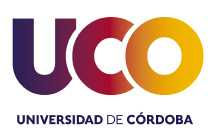Promoting the sustainable management of eels within Sudoe area (INTERREG-SOE2/P5/E0617-SUDOANG)
Due to environmental and economic factors as well as the lack of coordination between the agents involved in its conservation, the European eel is currently in danger of extinction. SUDOAND proposes a solution based on scientific evidence to provide accurate information about the eel population and its evolution.
Through a web application and a governance platform, SUDOAND ensures greater coordination between the different actors in the sector as well as the development of more effective management models.
General objectives
To provide tools and joint methods that support the conservation of the european anguilla and its habitat to managers in the Sudoe area
To provide joint evaluation and management tools for european eel and its habitat to the agents of the sudoe area : Within the countries, and even the regions of the SUDOE area, there is a wide variety of methods to estimate the key indicators for the monitoring of the eel population: ranging from coarse extrapolations with reference values from other places, to widely accepted models by the scientific community.
Thus, it is necessary to provide the managers of the SUDOE area with tools that reinforce their capacity to make decisions based on greater scientific evidence and in an agreed manner. It will allow finding a balance between the conservation of this emblematic species itself and its ecosystems with the fishery and other water uses.
To design a strategy in order to obtain data for a long-term and coordinated monitorining of the population of anguilla in the Sudoe area: To carry out the evaluation of the population, analyze the effectiveness of the implemented measures and calibrate the estimates produced by the models, it is necessary to know key parameters related to the species and its habitat.
However, 1) in certain basins of the SUDOE area there are knowledge gaps about the species that hinder the management and conservation of the species; 2) in the absence of common protocols, the information collected is not comparable; and 3) it is costly to obtain these parameters from an economic and sampling effort point of view.
Therefore, it is necessary to design a strategy that allows the key parameters for the monitoring of eel in the Sudoe area to be collected in a coordinated and harmonized manner, with a reasonable economic cost and making sure that the follow-up is done in the long term.
To strengthen the cooperation of the agents involved in the governance of eel and its habitat in the Sudoe area: The complex biological cycle of European eel and its wide distribution causes the managers to be of different levels (e.g. national, regional and local) as well as of different sectors (e.g. public authorities and governmental bodies, organizations involved in the protection of the sea and water ecosystems, conservation of biodiversity and ecological restoration; scientific community, industrial sector or end-users).
Due to this, European eel management is not carried out in a concerted manner in the SUDOE area. Thus, it is necessary to improve the dialogue, the cooperation and the capitalization of knowledge and experiences to promote the conservation of European eel and its habitats, making it compatible with long-term exploitation of the species and guarantying the maintenance of employment and modes of life and cultures related to European eel fishery.
Role of the University of Cordoba
- Atlas of distribution of the European eel
- Recruitment model
- European eel governance platform
- The silver eel biomass estimation model
- European eel monitoring network in the area
- Action plan for awareness and good practices
Investigador Principal: Carlos Fernández Delgado
Correo electrónico de contacto: ba1fedec@uco.es
Página web del proyecto: www.sudoang.eu

